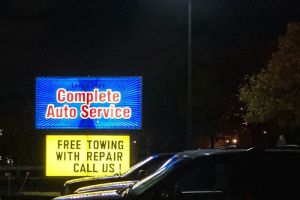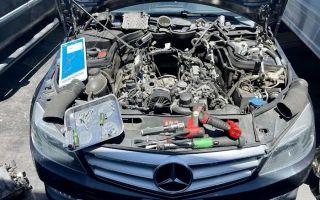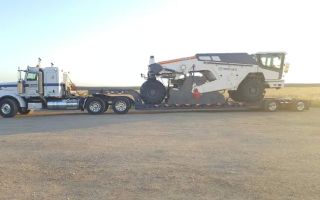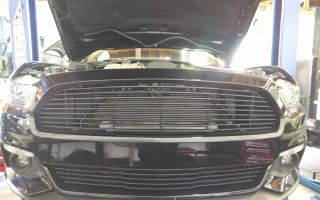How Do I Jumpstart a Truck with a Low Battery?
Imagine you're on your way to work or on a road trip, and suddenly, your truck won’t start. After checking the engine, you realize your truck has a low battery. This is a situation that many drivers face at some point, and it can be stressful, especially if you’re in a remote area or have no immediate help available. Jumpstarting a truck with a low battery might sound intimidating, but it’s a skill that every truck owner should know. Not only does it save you time and hassle, but it also helps you avoid unnecessary towing fees or roadside assistance charges.
In this guide, we’ll walk you through the process of safely and efficiently jumpstarting your truck with a low battery. We’ll also provide insights into the tools you’ll need, the steps involved, and some common mistakes to avoid. By the end of this article, you’ll feel confident about handling this task on your own and be prepared for any future situations when your truck’s battery runs low.

Firestone Complete Auto Care
1933 N Placentia Ave, Fullerton, CA 92831, USA
Why Do Truck Batteries Run Low?
A truck’s battery can run low for a variety of reasons. Some of the most common reasons include:
- Leaving lights on: Forgetting to turn off the headlights, interior lights, or other electronics in your truck can quickly drain the battery.
- Old battery: Batteries generally last 3-5 years, and older batteries are more prone to running low, especially in colder weather.
- Parasitic drain: This occurs when an electrical component or system continues to draw power even when the truck is off, draining the battery.
- Cold weather: In colder climates, battery performance tends to drop. A truck's battery may lose 35% of its capacity at 32°F and up to 60% at 0°F.
Regardless of the cause, jumpstarting the truck can get you back on the road quickly, allowing you to avoid the inconvenience of calling a tow service or waiting for roadside assistance.

Complete Auto Service of Ann Arbor
2890 Jackson Ave, Ann Arbor, MI 48103, USA
What You Need to Jumpstart Your Truck
Before you can jumpstart your truck, it’s essential to have the right tools on hand. Here’s a quick checklist of what you’ll need:
- Jumper cables: The most important tool, these cables allow you to transfer power from a working vehicle to your truck’s dead battery.
- Another vehicle with a charged battery: You’ll need a second vehicle with a fully charged battery to provide the necessary power.
- Protective gear (optional): While not required, gloves and safety glasses can provide additional protection, especially when handling the truck’s battery.
Once you’ve gathered these tools, you’re ready to move on to the next step: jumpstarting your truck safely and correctly.
Step-by-Step Guide to Jumpstarting Your Truck
Now that you’re prepared with the right tools, let’s walk through the step-by-step process of jumpstarting your truck:
1. Position the Vehicles
Begin by positioning the working vehicle next to your truck. Make sure that both vehicles are off. The vehicles should be close enough for the jumper cables to reach both batteries, but avoid letting the vehicles touch each other. Engage the parking brakes on both vehicles to ensure they don’t move during the process.
2. Connect the Jumper Cables
Next, you’ll need to connect the jumper cables. Follow this order to ensure safety and success:
- Red cable to dead battery: Connect one end of the red jumper cable to the positive (+) terminal of the dead battery in your truck.
- Red cable to good battery: Attach the other end of the red jumper cable to the positive (+) terminal of the working vehicle’s battery.
- Black cable to good battery: Connect one end of the black jumper cable to the negative (-) terminal of the working vehicle’s battery.
- Black cable to unpainted metal: Attach the other end of the black jumper cable to an unpainted metal part of the truck, such as a bolt or a clean area on the truck’s frame. This acts as a ground and helps prevent sparks near the battery.
It’s crucial to ensure that the connections are secure and that the cables are not touching any moving parts in the engine. Improper connections could lead to damage to the vehicles or even cause sparks and fires.
3. Start the Working Vehicle
Start the engine of the working vehicle. Let it run for a few minutes to allow the battery to transfer power to the dead battery in your truck. You may notice the truck’s lights flicker or the dashboard lights turn on, signaling that the battery is receiving power.
4. Start the Dead Truck
Now, attempt to start your truck. If it starts, great! You can now remove the cables in reverse order. If your truck doesn’t start after a few tries, wait a few more minutes to allow more power to transfer, and try again. If it still doesn’t work, your truck may have a more significant issue that needs professional attention.
5. Disconnect the Jumper Cables
Once the truck starts, carefully remove the jumper cables in the reverse order of how you connected them:
- Remove the black cable from the unpainted metal of your truck.
- Remove the black cable from the negative (-) terminal of the working battery.
- Remove the red cable from the positive (+) terminal of the working battery.
- Finally, remove the red cable from the positive (+) terminal of the dead battery.
Make sure to store the cables safely and away from any hot or moving parts. Now that your truck is running, take it for a short drive to recharge the battery fully.
Common Mistakes to Avoid When Jumpstarting a Truck
While jumpstarting a truck is relatively straightforward, there are some common mistakes that can cause problems:
- Incorrect cable connections: Connecting the cables in the wrong order can lead to sparks, short circuits, and even damage to both vehicles’ electrical systems.
- Using damaged jumper cables: Always inspect your jumper cables for wear or frays before use. Damaged cables can cause power issues or even spark.
- Starting the dead truck too quickly: Give the working vehicle a few minutes to transfer enough power before trying to start your truck.
Avoiding these mistakes will help you safely and effectively jumpstart your truck and prevent unnecessary damage to your vehicle.
When to Call for Professional Help
In some cases, jumpstarting your truck might not be enough. If your truck continues to have issues starting, or if your battery keeps dying, it could indicate a deeper problem such as a faulty alternator, battery, or electrical system. In these situations, it’s important to contact a professional towing or roadside assistance service to avoid further damage.
Rescue & Towing provides fast, professional services for situations just like this. Whether you need a tow or assistance with an emergency jumpstart, their team is equipped to help get you back on the road quickly. Learn more about Rescue & Towing services at www.chucklesrescue.com.
Conclusion: Be Prepared and Stay Safe
Jumpstarting a truck with a low battery can seem daunting, but by following these steps and avoiding common mistakes, you can tackle this task safely and efficiently. Always have the necessary tools on hand, and don’t hesitate to seek professional help if you’re unsure or encounter difficulties. If you find yourself in an emergency, Rescue & Towing is always just a call away to provide the assistance you need to get back on the road.
For more information on our services, visit Rescue & Towing and see how we can help you in your time of need.


























